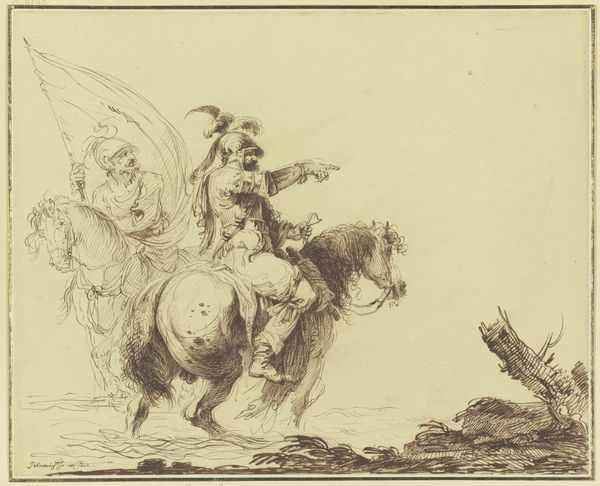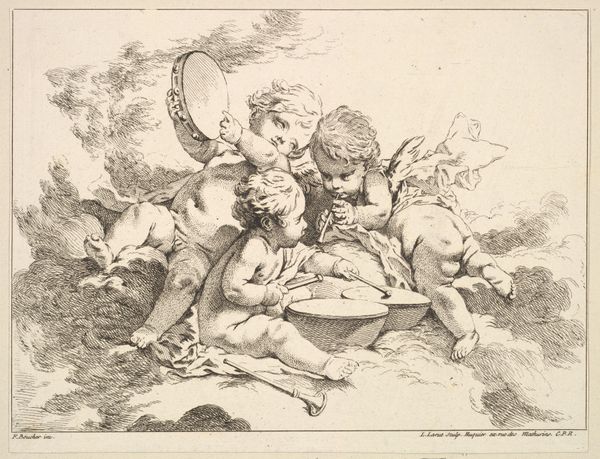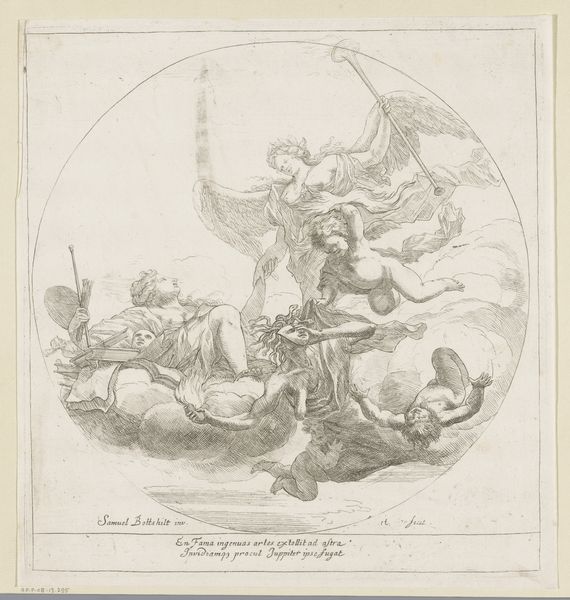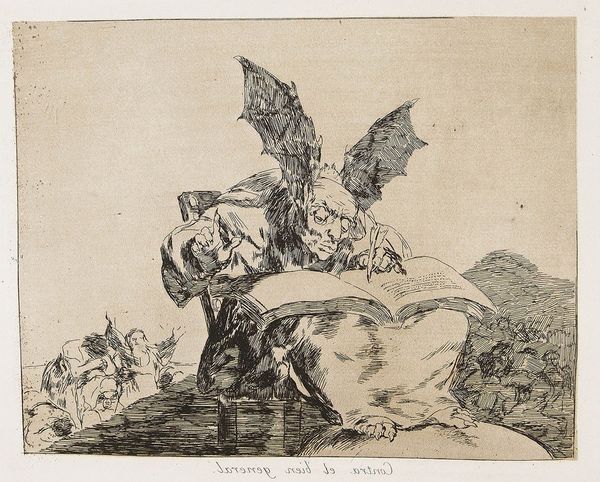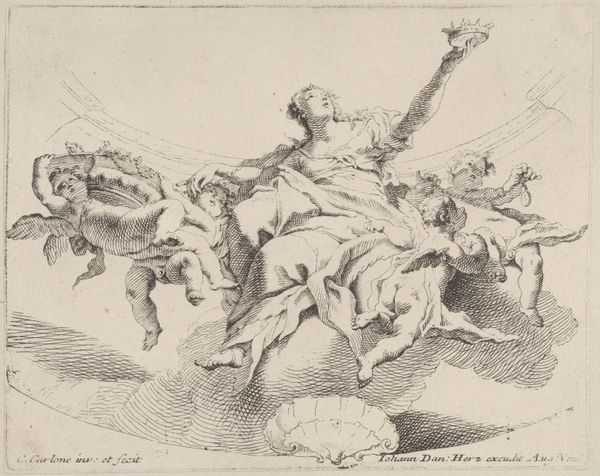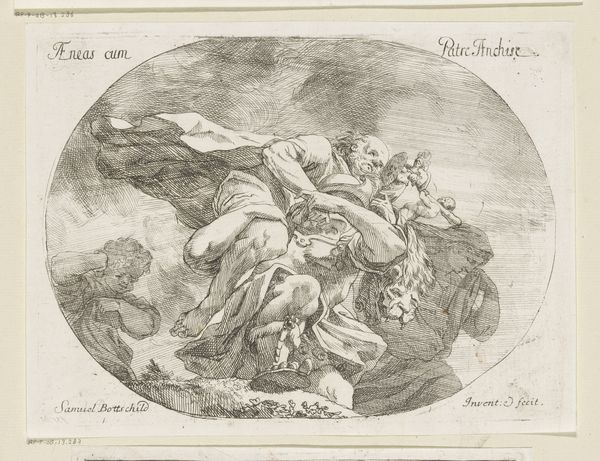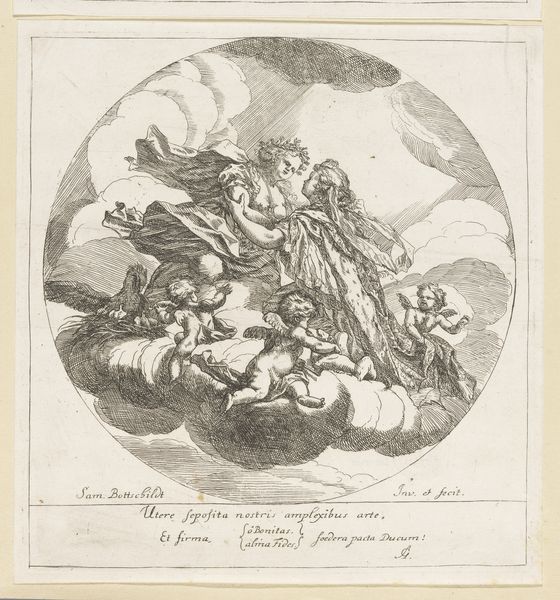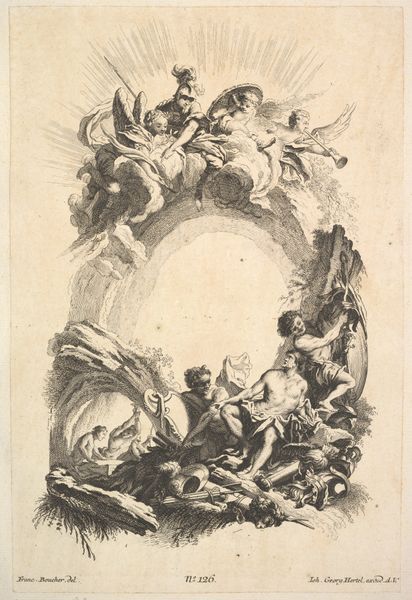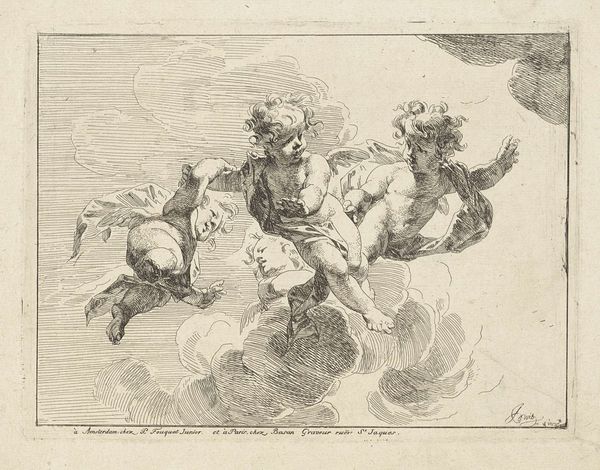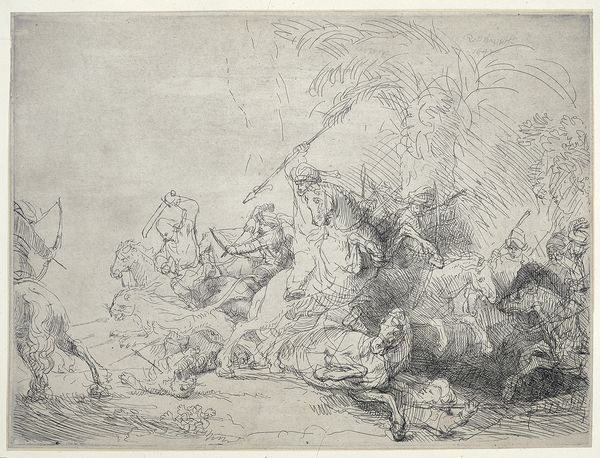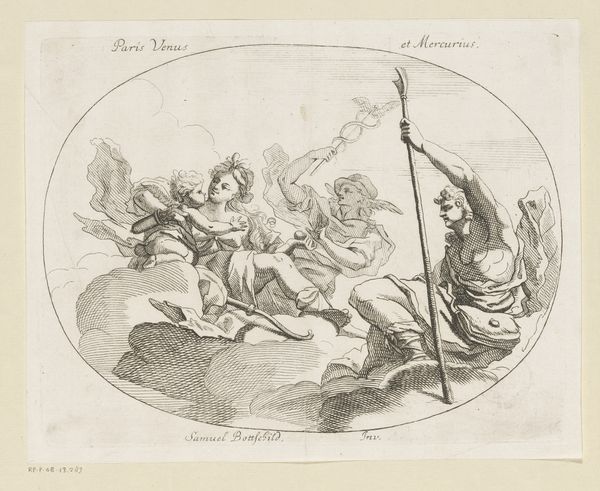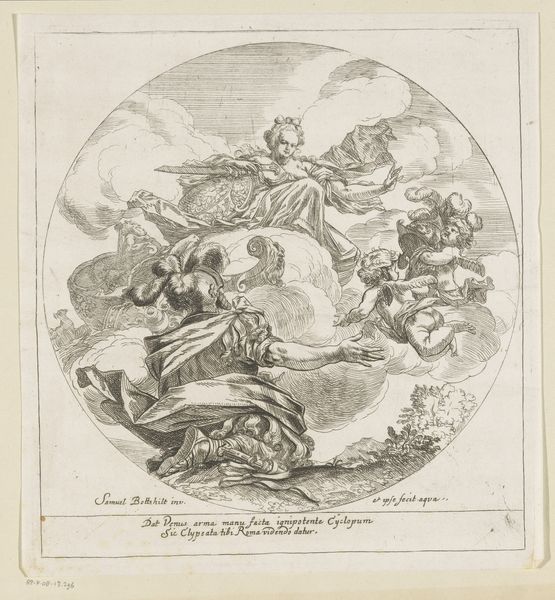
Wealth, represented by a woman seated on clouds and surrounded by putti, one of whom is pouring coins 1725 - 1775
0:00
0:00
drawing, print
#
drawing
#
allegory
#
baroque
# print
#
figuration
#
history-painting
Dimensions: Sheet (Trimmed): 5 9/16 × 7 1/16 in. (14.1 × 17.9 cm)
Copyright: Public Domain
Editor: We're looking at "Wealth, represented by a woman seated on clouds and surrounded by putti, one of whom is pouring coins," a drawing or print from sometime between 1725 and 1775, by Carlo Innocenzo Carloni. There’s a kind of casual extravagance in the whole composition… What do you make of this, especially considering its historical context? Curator: It's fascinating to consider the materials and labor that would have gone into creating both the original design and then its reproduction as a print. The engraver's skill translates Carloni’s vision of wealth into a commodity available to a wider audience, thereby democratizing the image of opulence while simultaneously obscuring the means of its production. Where does the real wealth lie here: in the allegory, in the labor of creation, or in its eventual consumption? Editor: That’s a good point. The act of making and distributing the image transforms wealth into something almost... immaterial, detached from physical resources. Does the print, as a commodity itself, influence the way we see wealth? Curator: Absolutely. Consider the social function of prints during this era. They circulated widely, propagating ideologies. This image presents wealth as divinely sanctioned, a vision propagated to reinforce social hierarchies. It glosses over the material realities and exploitation often inherent in the accumulation of wealth. It almost seems to celebrate the *idea* of it, rather than actual labor or commodities. Do you find that disconnect interesting? Editor: Yes! It's a disconnect between the subject—wealth, often gained through labor and resources—and the object itself—a readily available print, almost divorced from the process of creating tangible wealth. Something about that feels really significant. Curator: Precisely. By focusing on the materiality of the print and its circulation, we gain insight into the social construction of wealth itself. It challenges us to question who benefits from this representation and what purposes it serves. Editor: It really flips the reading on its head. I initially just saw a Baroque representation, but now I'm considering the print as a form of labor and a commodity itself. Thank you! Curator: And thank you; examining art through the lens of materiality always enriches our understanding.
Comments
No comments
Be the first to comment and join the conversation on the ultimate creative platform.
